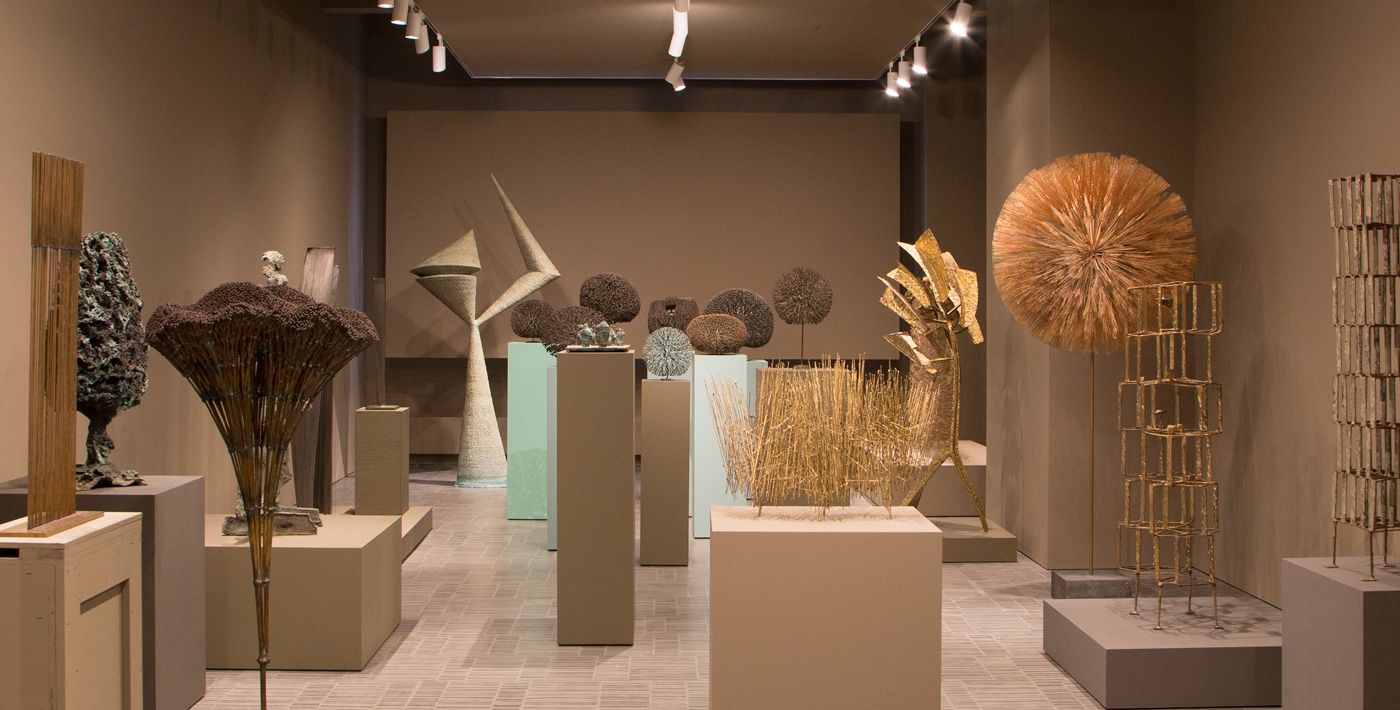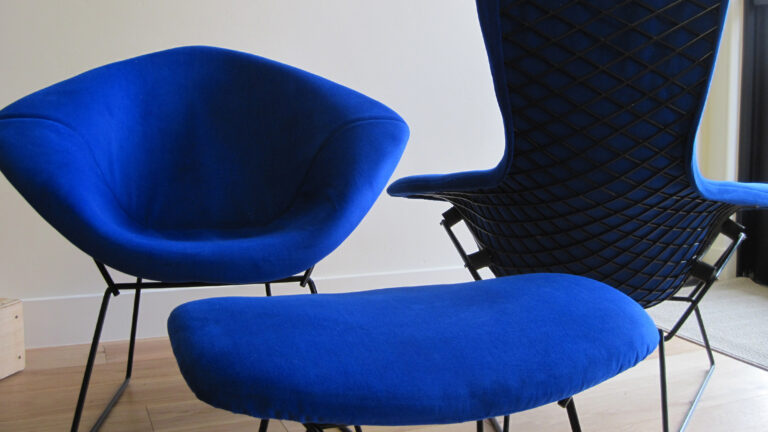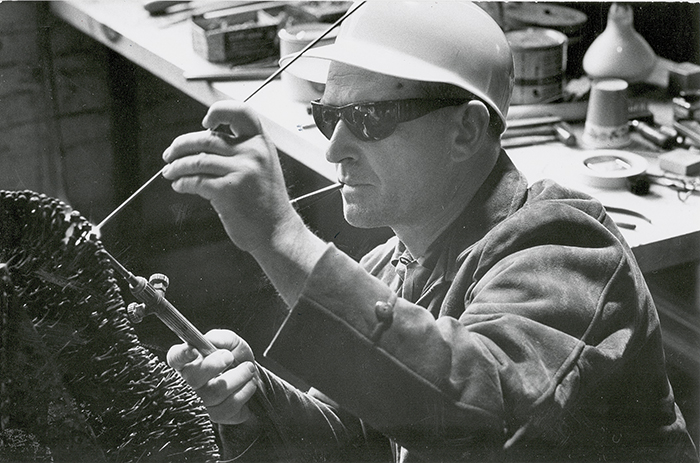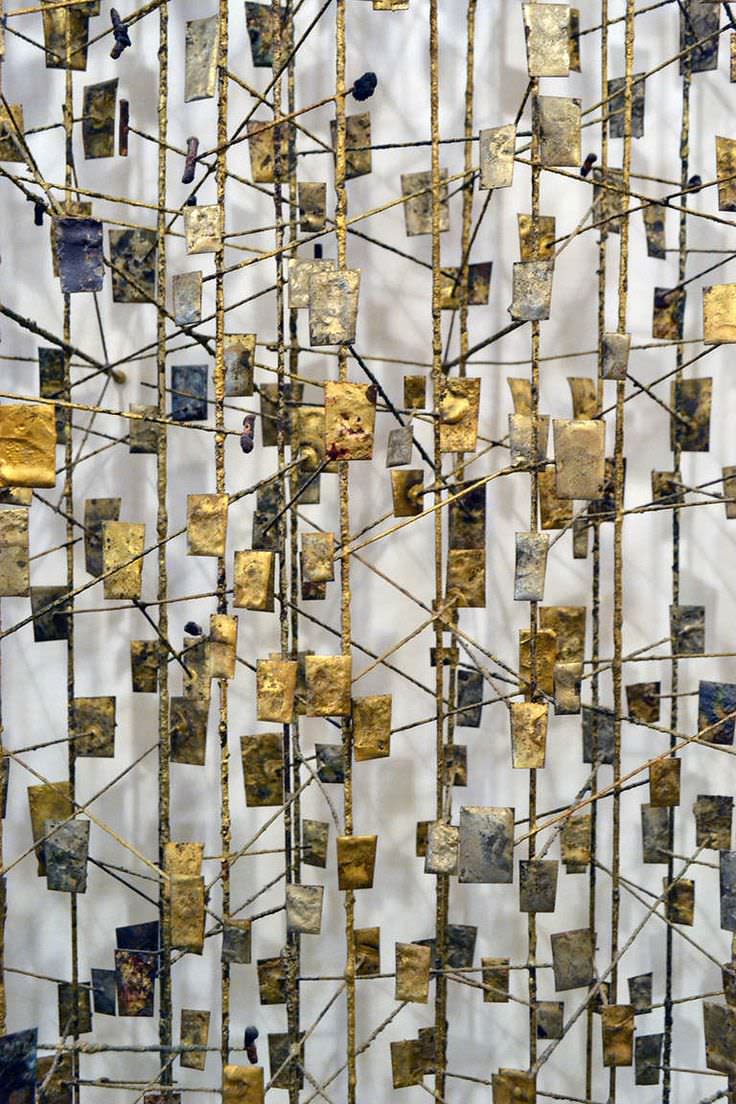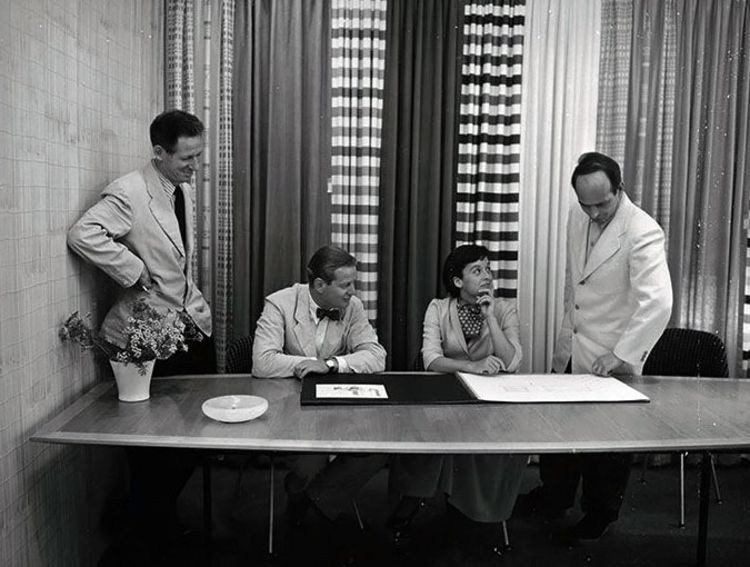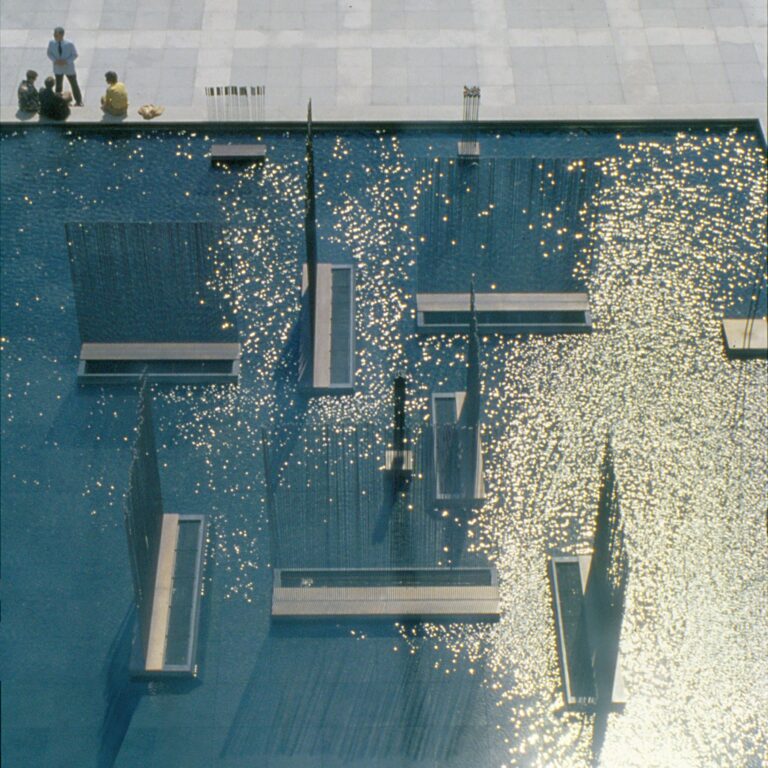Cleaning and Care of Bertoia sculptures
General Care and Preventative Measures to Keep your Sculpture Beautiful
Like any precious object, treat your sculptures with respect and care. If you do not feel comfortable doing any of the below procedures, then do NOT do them! You need confidence and a soft touch for some of the measures. It’s better to take it to a conservator than risk any damage. If you are not a do-it-yourself kind of person, stop here and hire a professional.
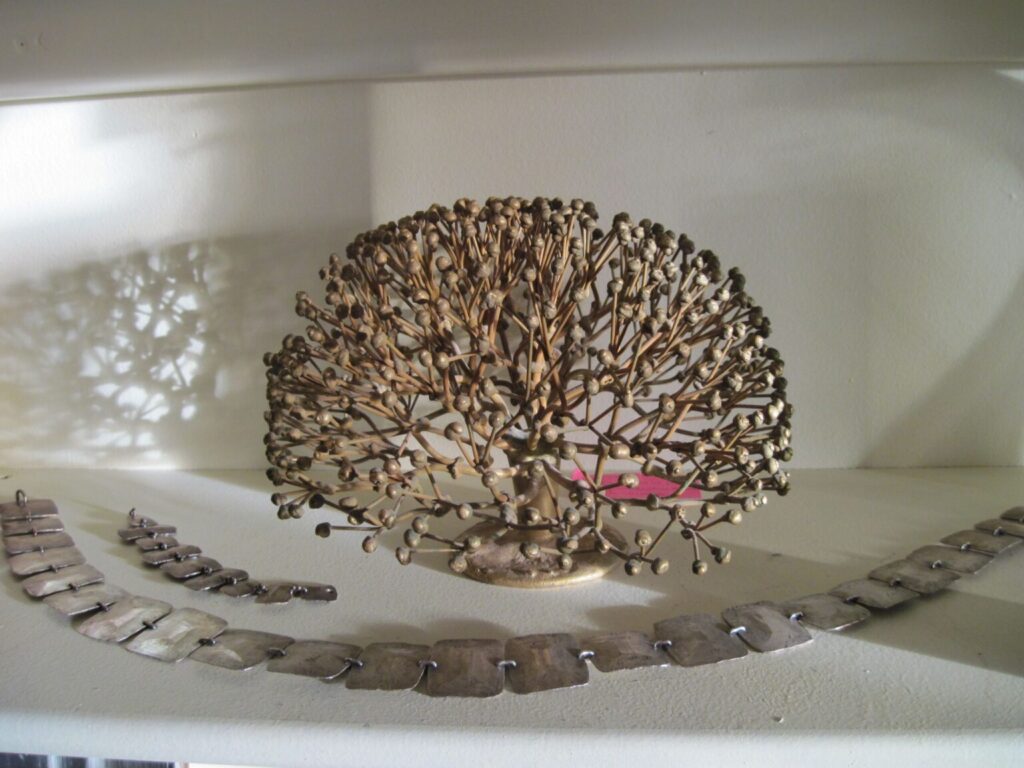
Using common sense, avoid small children or pets around delicate items. For truly fragile pieces such as some of the wire constructions or dandelions you might consider having a custom Plexiglas covering made for it.
Don’t be afraid to touch your tonals. They enjoy it as do you. Avoid allowing them to fall over, either by wind or human traffic, or some other strong force. If they do fall, pick them up by grabbing all the rods together (unless it is a wide single row) and lifting them back up. Most tonals larger than a couple of feet tall are quite robust. If you have a wide single or double row, get a partner and have each of you select 5 or 6 rods at each end to gently lift.
When shipping, make sure you have the proper crate for your piece. Crates will need a whole other article, but just make sure you have a custom made crate that is right for your particular sculpture.
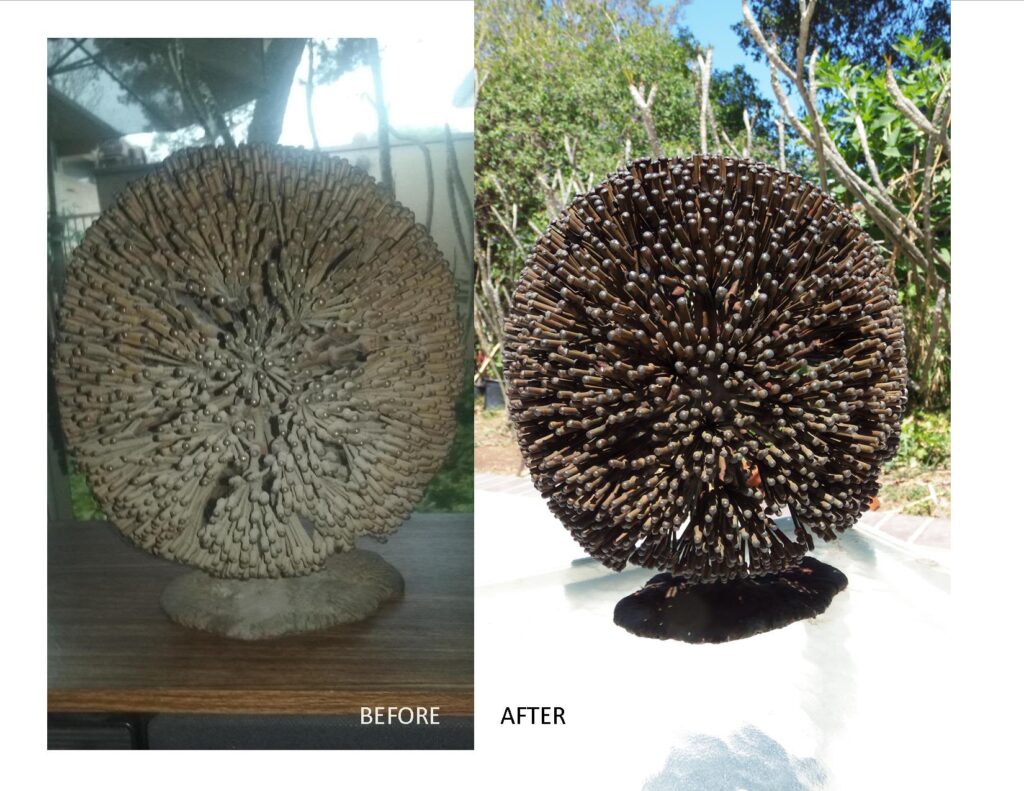
Cleaning
All sturdy Bertoia metal sculptures can be washed with a spray of water; kitchen faucet spray for small ones or a garden hose for larger items. Make sure to dry them off completely, either by sun, cloth, or air to prevent rust. Water will remove gentle stains and some dust. Harry often said “Use a hose.” Use a mild bristle brush or toothbrush on spots to see if that helps coax them away. You can try a mild dish detergent if there are more stubborn spots, but make sure to rinse and dry completely.
Dark spots or minor discoloration can be addressed with a metal cleaner. We like MAAS (try Amazon or https://w.maasinc.com) since it seems to last longer than some. Test it on a small area and make sure you get the results you want. You can apply multiple applications if needed. Just follow the instructions on the tube. Light or early bronze disease may be removed with several applications of MAAS, but if it has gotten too deep it won’t be enough. MAAS will also shine up a dull surface, if that’s what you like.
If you are going to exhibit or sell your piece, check with your auctioneer or museum to see what they prefer before cleaning. Some folks believe that the natural patina is best. You can also try CLR (Calcium Lime Rust) remover, available at most household stores. If none of the above works, you will need to take it to a conservator who has stronger chemicals. To remove dust and debris from between rods on a tonal, simply use a cotton swab or rag on a stick depending on the width and length of the rows between rods, and wipe each row individually, first in one direction and then the other. If you have pets in your residence, this may need to be a regular routine. An air gun, if you have one, can also work well. If the sculpture has an added patina making it green or blue, you can still wash it with water.
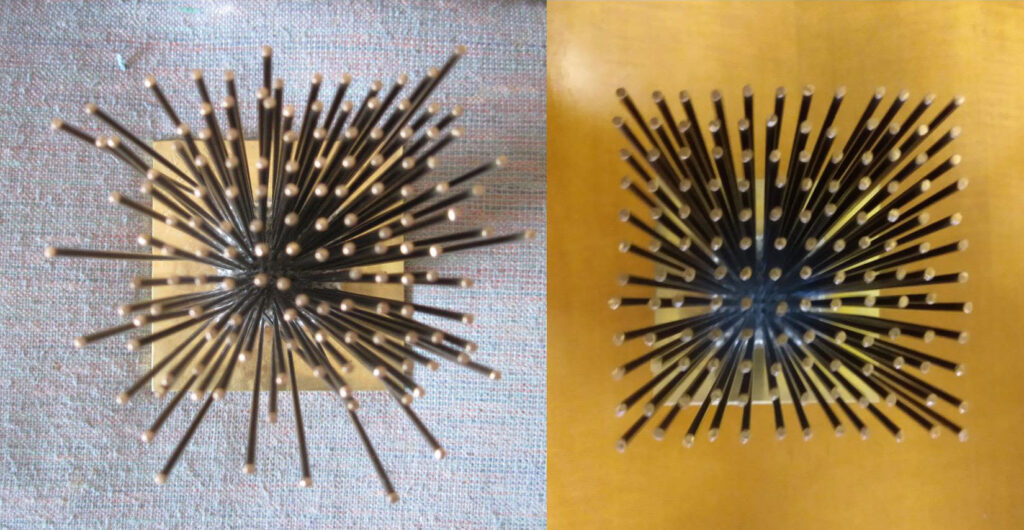
Straighten Rods
Tonal Rods Gone Wild
If you have several rods of your tonal out of place, we can guide you through a possible solution. But again, if you are not a do-it-yourself sort of person, don’t do it! Take it to a professional. If your tonal is made of thin wires, you will need to be very careful so as not to break them. The thicker rods, 1/8 inch or more, are more robust and can be handled gently. Simply take each individual rod and bend it backwards past the place it should be so that, when released, it will pop into the correct position. In other words, pull or push in the opposite direction until it finally relaxes into the right place. Gently move the other rods out of the way so you have clearance to bend the culprit. It usually has to be done numerous times to get it right. It is delicate and time consuming, but should resolve the issue. If a rod is actually bent somewhere in the middle at an angle, do NOT attempt to fix it. It might break. Take it to a professional.
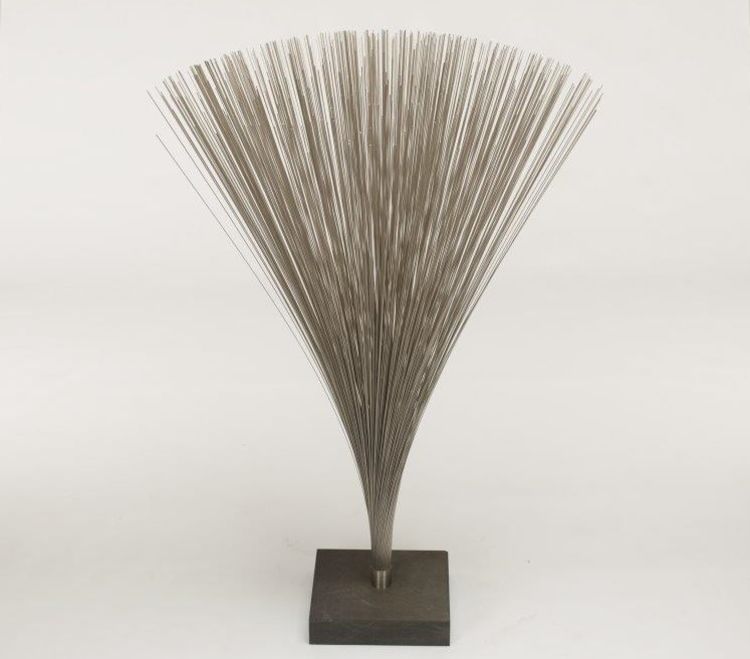
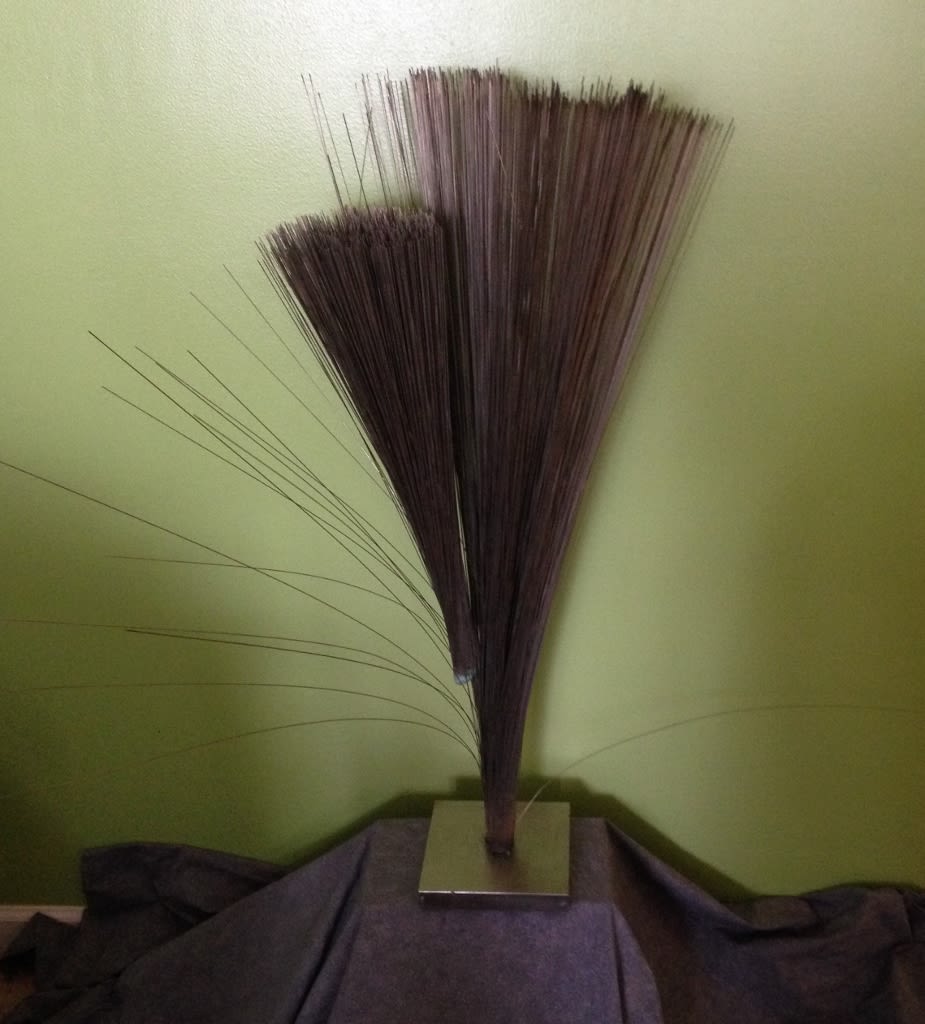
Be Gentle
Sprays
The most common issue with sprays is wayward wires that fall outside of the desired silhouette. The wires are thin and may break or snap off if mishandled, so be gentle but firm.
The process is, like above, to take each individual wire and bend it backwards past the place it should be so that, when released, it will pop into the correct position. In other words, pull or push in the opposite direction until it finally relaxes into the right place. Gently move the other wires out of the way so you have clearance to bend the culprit. It has to be done numerous times to get it right. It is delicate and time consuming, but should resolve the issue.
This process is preferred because you would not have to remove the collar (if there is one) or any wires. As with tonals, if a wire is bent somewhere at a sharp angle, do NOT attempt to fix it. Take it to a professional. If storing for an extended period of time, it would be helpful to hang the spray upside down with soft straps holding the wires together which encourages the correct positioning.
If any of the wires are bent badly enough to be replaced, you would need to completely remove the wire, then position the new one in the same place and solder it in. This requires skill. And unless you have experience in this area, consult a conservation company.
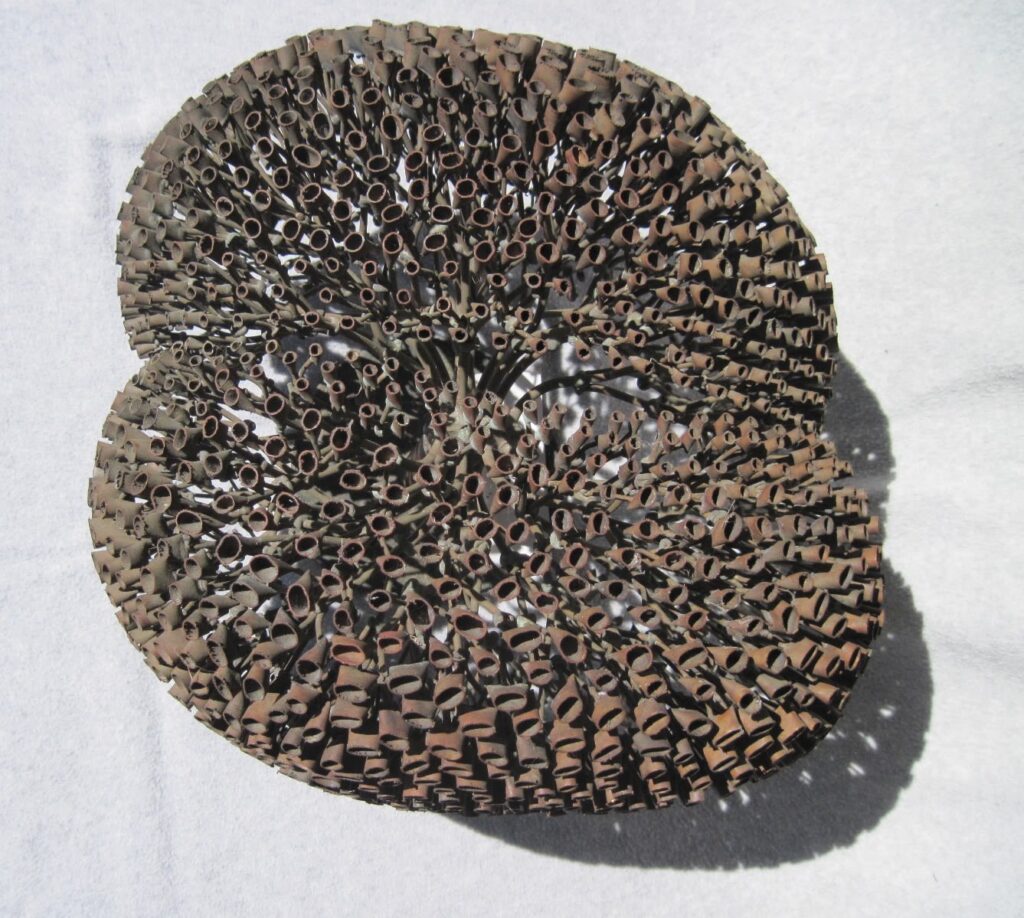
Bushes
If the bush has some bent branches, you might be able to straighten them. Secure the base, either by having a friend hold it or with clamps and soft rags to prevent scratching. Find the bent branch and if the branches are sparse, you may be able to reach in with your hand or wooden hand tool. Go as deep as possible and simply bend it to the right position. If the bush is very dense, you will probably need to take it to a conservator.
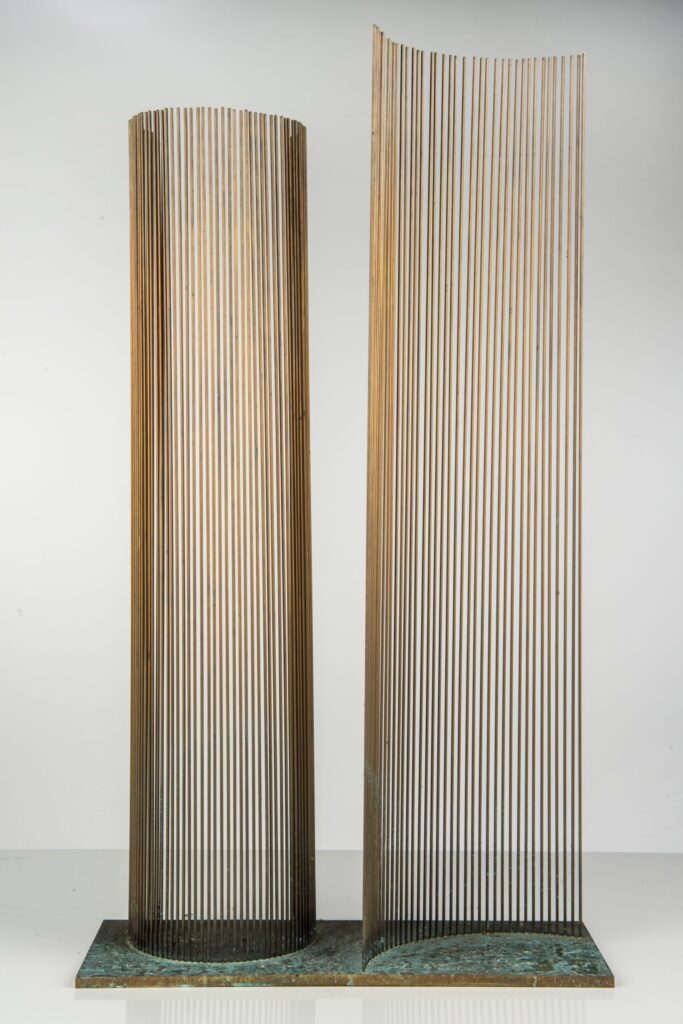
Bronze Disease
Note the green surface of the base of this tonal.
If your sculpture has been outside, in humid conditions, in contact with soil, or various other conditions, it may have a thick greenish layer on top of the original surface. The metal has reacted with the salts and chemicals to form a completely different substance and at its worst, a greenish powder. While this is rather interesting surface, if left too long it will eventually eat away the metal itself and destroy the item. If there are just a few spots you might be able to remove them with the MAAS metal cleaner mentioned above, but if it covers large areas, you will need professional help. The conservators start by mechanically removing what they can, then using strong chemicals to treat the rest. To avoid ruining your valuable sculpture, take it to an expert.

Protectorants
Once your item is cleaned to your satisfaction, some people choose to wax or lacquer the surface to protect it. Harry never did this, but he wasn’t around long enough to see the worst cases. Sculptures exposed to ocean air or pollution or smoke might benefit from a protectant. Be aware that it may affect the sound of sounding sculptures. A common protective lacquer is Paraloid B72. A wax that museums use is microcrystalline Renaissance Wax. We do not have experience with either of these, so try at your own risk.
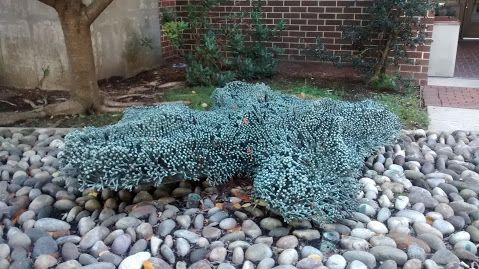
Professionals
If you are unable or too nervous to fix your sculpture, find a professional. Make sure to find a conservator who is experienced with metal sculpture, and preferably with Bertoia sculptures. Here are a few we recommend.
Ken Thompson Flatlanders Sculpture Supply and Art Gallery Blissfield, MI 517 486-4591 contact@flatlandersculpture.com http://www.flatlandersculpture.com/
Colin Turner, Midwest Art Conservation Center Minneapolis, MN 612 870-3120 info@preserveart.org http://www.preserveart.org
Suzanne Siano, Modern Art Conservation
New York, NY 212 255-0611 mac@modernartconservation.com www.modernartconservation.com
Scott Kreilick, Kreilick Conservation
Oreland, PA 215 205-4561, 215 572-6616
skreilick@kreilickconservation.com
https://www.kreilickconservation.com/
Chloe Castro, PRESERVATION ARTS
Oakland, CA 510 808-7894
chloe@preservation-arts.com http://www.sfartconservation.com
Vicki Atlasman, Gladstone Industries Corporation Las Vegas, NV 702 838-0500 vatlasman@gladstoneindustries.com
www.gladstoneindustries.com
If this information is valuable to you, consider supporting the foundation so we can offer more!

